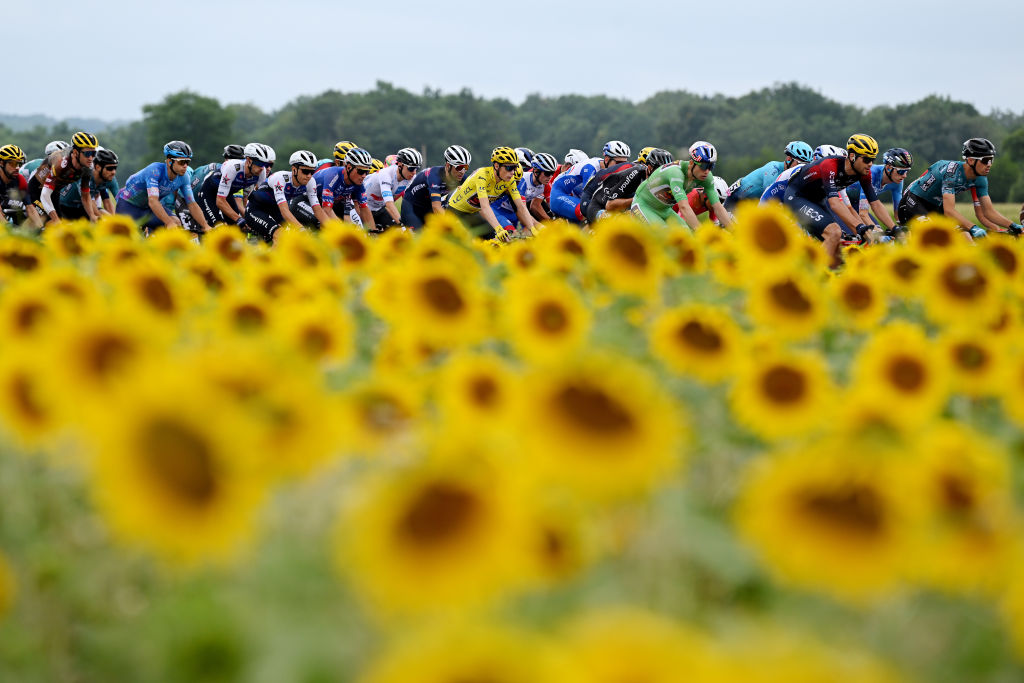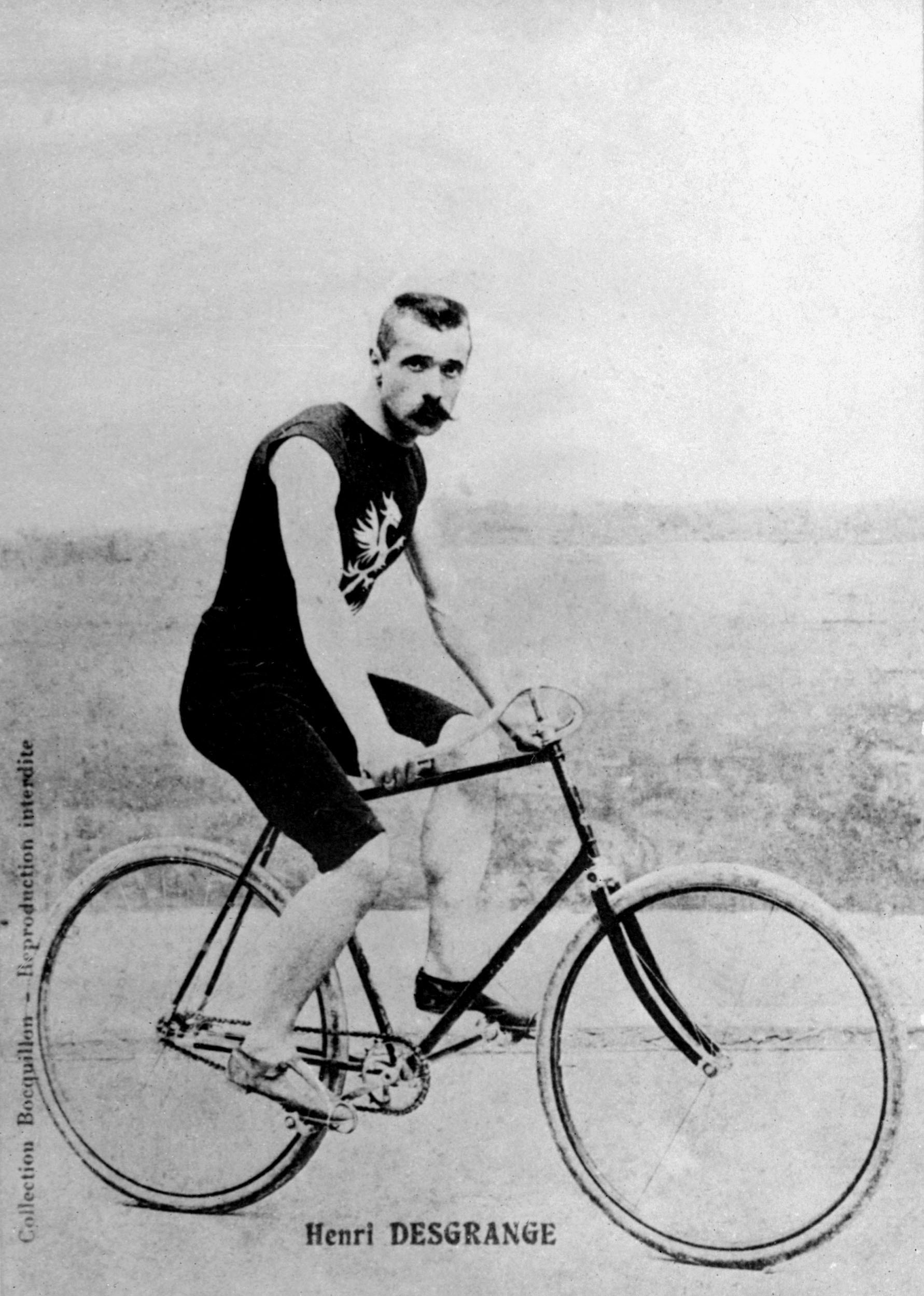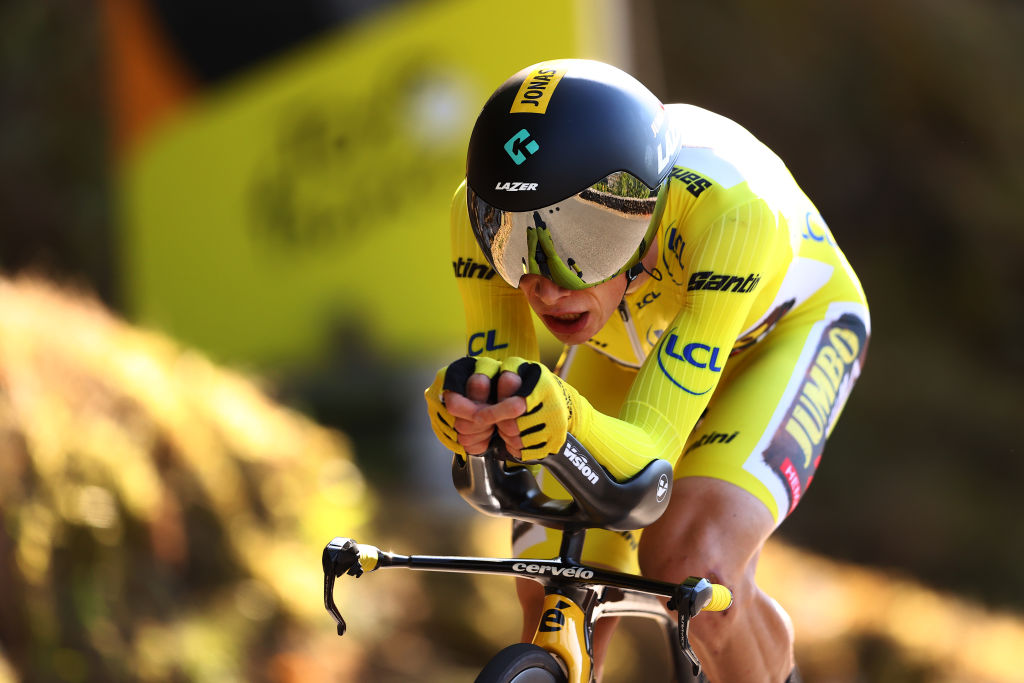How long is the Tour de France?
The 2023 Tour de France will cover 3,405 kilometres. We take a look at the historic distances of the Tour de France

The Tour de France has long been considered the crowning glory of the cycling calendar. Taking place over three weeks in July, the race features 21 stages, varying in length and style from day to day.
Typically with two rest days, the Tour de France usually lasts a total of 23 days, typically taking in around 3,500km in distance.
In the 2023 race takes place from 1st July to 23rd July and clocks in at 3,405 kilometres starting from Bilbao, Spain with two punchy stages in the Basque Country that will most likely not end in a bunch sprint.
After eight flat stages, four hilly stages and eight days in the high mountains including four summit finales and a single time trial, the race will finish as is traditional, in Paris on the Champs-Élysées.
Three Grand Tours
The Tour de France, Giro d'Italia and Vuelta a España make up the 'Grand Slam' of professional road racing. In terms of prestige and history, the Tour de France is top of the pile when it comes to Grand Tours, and as a result, it’s the most renowned. Is that reflected in the distance it covers, though?
Not this year. The Giro d’Italia takes the prize for the longest Grand Tour of 2023, at 3,448 kilometres, with La Vuelta a España the shortest at 3,153.8 kilometres.
In recent years, though, the Giro and the Tour have been uncannily similar, in terms of their overall distances. The average overall distance from 2000-2020 was 3,490 kilometres over the three weeks for the Giro d’Italia and 3,491 kilometres for the Tour de France.
The latest race content, interviews, features, reviews and expert buying guides, direct to your inbox!
La Vuelta remains consistently the shortest in overall distance for a Grand Tour, with its average distance over the same period a mere 3,195 kilometres, just under 300km shorter than either of its counterparts.
Longest Race in History
Historically speaking, you might assume that the Tour de France has become harder over the years, to compensate for the peloton’s access to rapidly-improving resources including diet and nutrition, performance apparel, and of course the equipment.
This isn’t strictly the case. Overall, distances have come down over the years although the number of stages has increased.
The first three editions of the Tour were relatively short, all at under 3000km. In fact, the shortest ever editions of the Tour de France were the first two, in 1903 and 1904, both the same length at 2,428 km. It’s worth noting though, that this distance was divided into just six stages.

From then on, overall distance increased dramatically. Between 1911 and 1929, riders covered over 5000km each year. The longest edition of the Tour de France took place in 1926 and clocked in at an eye-watering 5,745 km (almost the distance from Paris to New York).
This remained the case for some time, total kilometres regularly exceeding 4000km all the way through to the 1980s.
The Giro and the Vuelta tell similar stories of extremes. The longest Giro d’Italia was the 1954 edition at 4,337km, and the longest Vuelta was 4,407km. Ultimately, though, neither come close to the Tour de France’s mammoth distances of old.
This also applies to the length of individual stages. While the longest stage of this year’s Tour will be a 220km slog from Binche to Longwy, it pales in comparison to what riders of the past had to contend with.
The longest-ever stage of the Tour was the fifth stage of the 1919 edition; it was a whopping 482 kilometres long, over twice the distance that the riders will cover in this year’s longest stage. Once again, the Tour de France proves itself the ultimate Grand Tour, as the longest stages the Giro and the Vuelta can boast are 430km and 310km ,respectively.

How far is the 2023 Tour de France route?
These days, what the Tour lacks in overall distance compared with years gone by, it more than makes up for in varied days and challenging terrain. After the shortest edition of the Tour de France in 20 years last year, this year's route covers 3,405 kilometres.
However, the challenges that face the nearly 200 riders expected to compete across the span of a 23-day Grand Tour do not begin and end with sheer distance. There is the small matter of elevation gain – a very different proposition measured in metres – which will test the riders’ legs as they claw their way up France's most iconic climbs.
The race typically ascends a total 48,000 metres, the equivalent of climbing Mount Everest five and a half times.
Tour de France distances covered from 2013 to 2022
- Tour de France 2023: 3,405 kilometres (2116 miles)
- Tour de France 2022: 3,328 kilometres (2,068 miles)
- Tour de France 2021: 3,414 kilometres (2,122 miles)
- Tour de France 2020: 3,484 kilometres (2,165 mile)s
- Tour de France 2019: 3,366 kilometres (2,091 miles)
- Tour de France 2018: 3,351 kilometres (2,082 miles)
- Tour de France 2017: 3,540 kilometres (2,200 miles)
- Tour de France 2016: 3,529 kilometres (2,193 miles)
- Tour de France 2015: 3,360 kilometres (2,088 miles)
- Tour de France 2014: 3,661 kilometres (2,275 miles)
- Tour de France 2013: 3,404 kilometres (2,115 miles)
- Tour de France 2012: 3,497 kilometres (2,173 miles)
Katy Madgwick is a freelance writer and broadcaster, covering multiple disciplines across both men's and women's pro cycling. Head of Creators at Domestique Cycling, Katy has written for a broad range of publications, and is a regular contributor to Cyclist Magazine, Cyclingnews, TNT Sports and The Roadbook Cycling Almanack.
On the broadcast side, she is a co-host of the On Yer Bike podcast, occasional contributor to BBC Radio, and features on CADE Media's Pro Show podcast for the first time in 2025.
She is a lover of all things French and a cyclo-cross obsessive, and probably ought to get on her actual bike more often.
